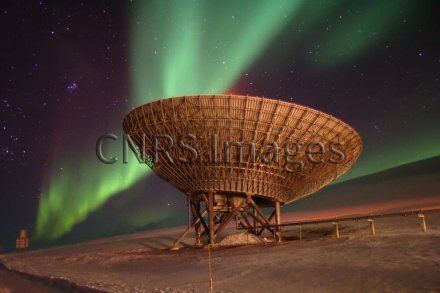Production year
2007

© Guillaume GRONOFF/INSU/LPG/CNRS Images
20080001_0411
Aurore boréale, avec l'émission principale de l'oxygène dans la raie rouge, observée sur l'île de Svalbard (Spitzberg) en Norvège, à 79° de latitude Nord. Pour la première fois, étude d'un phénomène de polarisation de la lumière provenant de la haute atmosphère boréale, réalisée dans la zone aurorale. Au premier plan, un radar d'EISCAT (European Incoherent Scattering), de 42 m, qui permet d'étudier la haute atmosphère par diffusion incohérente. Sur la gauche, on distingue, les groupes d'étoiles Hyades et les Pléiades.
The use of media visible on the CNRS Images Platform can be granted on request. Any reproduction or representation is forbidden without prior authorization from CNRS Images (except for resources under Creative Commons license).
No modification of an image may be made without the prior consent of CNRS Images.
No use of an image for advertising purposes or distribution to a third party may be made without the prior agreement of CNRS Images.
For more information, please consult our general conditions
2007
Our work is guided by the way scientists question the world around them and we translate their research into images to help people to understand the world better and to awaken their curiosity and wonderment.